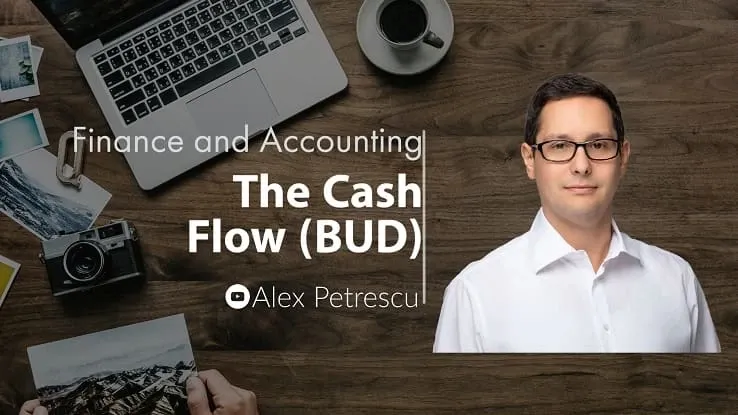This plan includes
- Limited free courses access
- Play & Pause Course Videos
- Video Recorded Lectures
- Learn on Mobile/PC/Tablet
- Quizzes and Real Projects
- Lifetime Course Certificate
- Email & Chat Support
What you'll learn?
- General considerations about the Cash Flow statement
- Challenges of building a real life Cash Flow forecast – the direct method
- Template proposal
- Forecast elements – where to find them
- Forecast elements – how to estimate the ones we don‘t have as such
- General considerations about performing / maintaining your forecast
- Alternative use of indirect method
Course Overview
One of the three major financial statements of the company, the cash-flow report is used only sparely by FP&A (Performance management) professionals. The other two, the Profit and Loss (or SOCI) and the Balance Sheet (or SOFP) are used more intensively. The reasons behind it are both in the area of knowledge (you can not really use something you just learned a long time ago or vaguely heard about) but mostly the reality in the field. The P&L statement is used more often because it shows the performance of a company. And because it is always very difficult to introduce, explain and use as regular tool any financial statement when it comes to interacting with managers from other functions (Marketing, Sales, Supply Chain etc.).
However, companies can find themselves in troubles too. The financial crisis of 2008-2009, the Covid pandemic of 2020 but also individual cases can lead to situations when performance is no longer important (we know the company is at a loss) but surviving as an organization takes precedence. And it is in such moments when the focus shifts from wide use of P&L statements to cash flow statements, from being performant to staying solvable.
Bankruptcy is happening when there is no money left. And the impossibility of paying the due debt may or may not be related directly and on a short term with having losses.
And if we are not in a bad financial position with our company, we always get questions from the management, which are mostly caused by the fact that accounting is accruals and not cash based: "We had profit in the last months, why is our bank account empty?", "Can we do an early repayment for our credit? How much and in which month?", "Can we pay the promised $1 dividend per share in March 20xx?", "We have this large investment requiring that much money in May and June. Can we finance it by ourselves or will we need a credit?"
This course answers to the questions about the future, being focused on building a cash flow statement forecast or budget ("Can we do an early repayment?", "Can we pay the dividend?", "Can we finance the investment?" etc.).
We assume the existence of knowledge about the structure of a cash flow statement, the direct and indirect methods, the working capital concept, the three typical cash flow groups (operational, investing and financing) and we build on a forecast template proposal using direct method, identifying in P/L and B/S forecasts (or budgets) the required elements or deriving them while we also talk about maintaining (updating) our cash-flow forecast. At the end we also touch the usage of indirect method in forecasting operational cash flow as a difficult approach.
Pre-requisites
- Minimal finance and accounting knowledge
- Basic Cash Flow statement knowledge
- Basic Excel knowledge
Target Audience
- FP&A Specialists
- Young accountants
- Managers of all levels and specialties involved in task-forces dealing with liquidity and survival of a company
Curriculum 8 Lectures 01:18:42
Section 1 : The cash flow | Forecast
- Lecture 2 :
- Part II - The Cash Flow - accruals, performance and solvency
- Lecture 3 :
- Part III - The forecast - method and template
- Lecture 4 :
- Part IV - The forecast elements - cash and inflows from clients
- Lecture 5 :
- Part V - The forecast elements - other operational flows I
- Lecture 6 :
- Part VI - The forecast elements - other operational flows II
- Lecture 7 :
- Part VII - The forecast elements - investment, financing and general elements
- Lecture 8 :
- Part VIII - The indirect method in forecasting and wrap-up
Our learners work at
Frequently Asked Questions
How do i access the course after purchase?
It's simple. When you sign up, you'll immediately have unlimited viewing of thousands of expert courses, paths to guide your learning, tools to measure your skills and hands-on resources like exercise files. There’s no limit on what you can learn and you can cancel at any time.Are these video based online self-learning courses?
Yes. All of the courses comes with online video based lectures created by certified instructors. Instructors have crafted these courses with a blend of high quality interactive videos, lectures, quizzes & real world projects to give you an indepth knowledge about the topic.Can i play & pause the course as per my convenience?
Yes absolutely & thats one of the advantage of self-paced courses. You can anytime pause or resume the course & come back & forth from one lecture to another lecture, play the videos mulitple times & so on.How do i contact the instructor for any doubts or questions?
Most of these courses have general questions & answers already covered within the course lectures. However, if you need any further help from the instructor, you can use the inbuilt Chat with Instructor option to send a message to an instructor & they will reply you within 24 hours. You can ask as many questions as you want.Do i need a pc to access the course or can i do it on mobile & tablet as well?
Brilliant question? Isn't it? You can access the courses on any device like PC, Mobile, Tablet & even on a smart tv. For mobile & a tablet you can download the Learnfly android or an iOS app. If mobile app is not available in your country, you can access the course directly by visting our website, its fully mobile friendly.Do i get any certificate for the courses?
Yes. Once you complete any course on our platform along with provided assessments by the instructor, you will be eligble to get certificate of course completion.
For how long can i access my course on the platform?
You require an active subscription to access courses on our platform. If your subscription is active, you can access any course on our platform with no restrictions.Is there any free trial?
Currently, we do not offer any free trial.Can i cancel anytime?
Yes, you can cancel your subscription at any time. Your subscription will auto-renew until you cancel, but why would you want to?
Instructor

293404 Course Views
13 Courses



 Tech & IT
Tech & IT
 Business
Business
 Coding & Developer
Coding & Developer
 Finance & Accounting
Finance & Accounting
 Academics
Academics
 Office Applications
Office Applications
 Art & Design
Art & Design
 Marketing
Marketing
 Health & Wellness
Health & Wellness
 Sounds & Music
Sounds & Music
 Lifestyle
Lifestyle
 Photography
Photography






 (1).jpg?crop=smart&width=600&height=400)



















